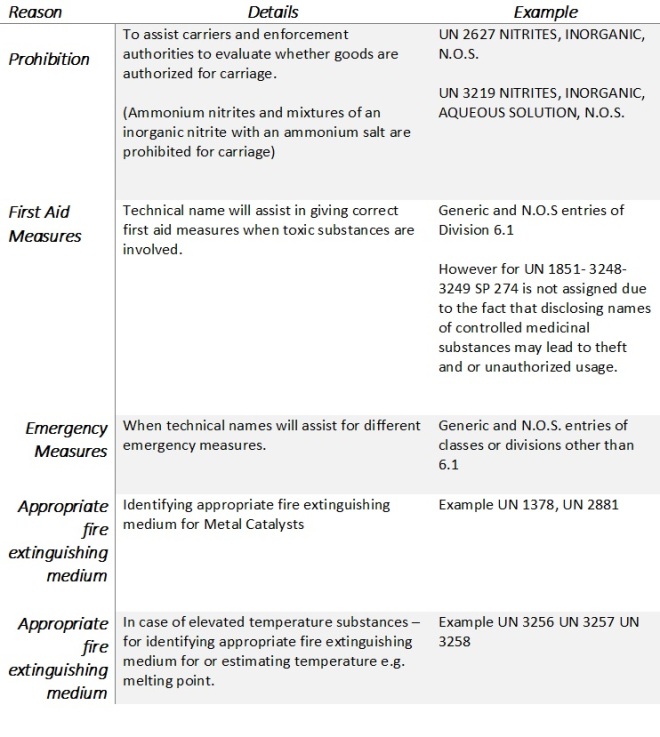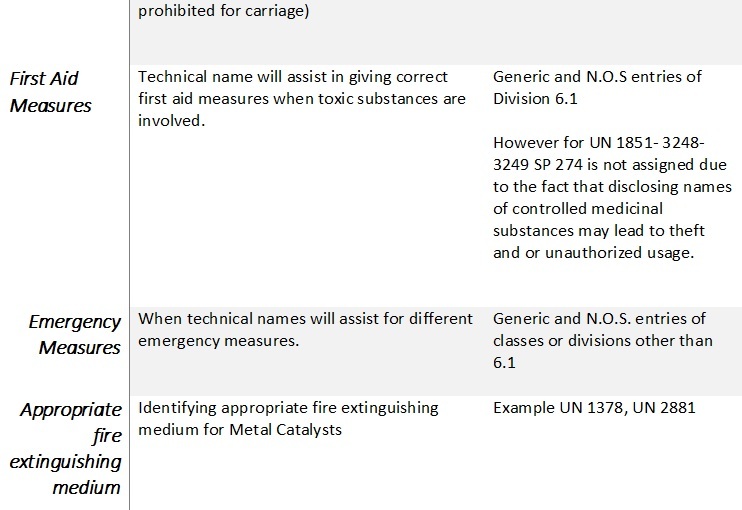Special Provision 274 assigned to Generic and Not Otherwise Specified (N.O.S.) entries in Model Regulations requires the shipper to supplement the Proper Shipping Name (PSN) with Technical Name on the Packages (marking) and in shipping papers (Dangerous Goods Declaration).
‘What’ must supplement the proper shipping name and ‘Why’ this is required.
What
The Generic and N.O.S. entries assigned with SP 274 shall be supplemented with
- Technical or Chemical group names
- Shall be a recognized chemical or other name currently used in scientific and technical handbooks, journals and texts.
- Shall be entered in brackets immediately following the Proper Shipping Name
- Modifier, such as “contains” or “containing” or other qualifying words such as “mixture”, “solution”, etc., and the percentage of the technical constituent may also be used
- Trade names shall not be used for this purpose
For Pesticides below may be used:
- ISO common name(s),
- other name(s) in the WHO Recommended Classification of Pesticides by Hazard and Guidelines to Classification
- the name(s) of the active substance(s)
When not required?
When a national law or international convention prohibits disclosing the name of a controlled substance.
Why Technical name is required?
Below table shows some of the reasons for the requirement of technical names through special provision 274

- Example: UN 1993 Flammable liquid, n.o.s. (contains xylene and benzene)
This article is in accordance with 37th amendment of IMDG Code.



